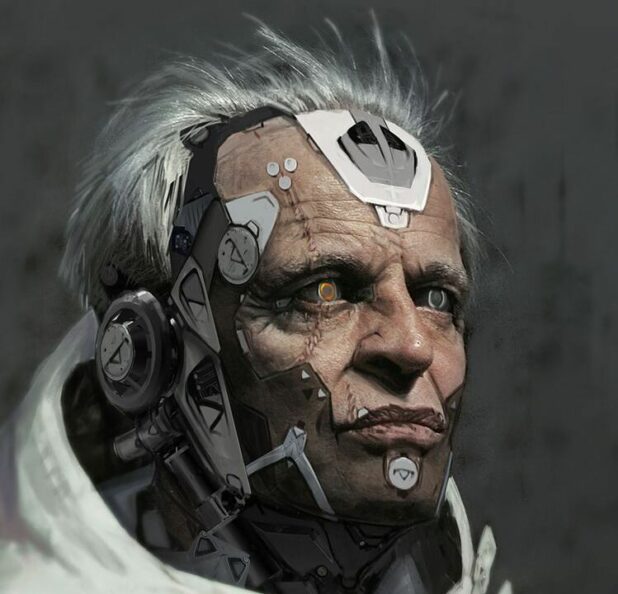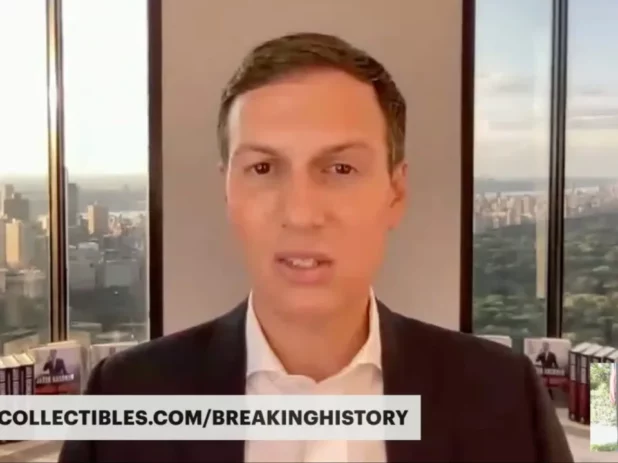As recently as last year, people were saying I was “insane” for talking about the cyborg agenda.
What do you people think is going on with these world overlords? They are trying to live forever.
Jared Kushner just said he’s going to live forever.
All I did was read what these people were writing. They’ve been saying for two decades that they’re going to live forever. That is why they are acting so boldly now.
Also, let me tell you: the key to living forever, according to them, is gene therapy. The coronavirus vaccine was part of this process – they wanted to mass experiment on people, and they wanted to pour billions and billions of dollars into producing an effective gene therapy delivery mechanism. That was the real goal of the vax. If they just wanted to kill people, they didn’t need a gene therapy injection.
It is insane – but it’s not me saying it! I only ever said what they said!
Here’s the fact: I’m better informed than virtually everyone on the planet.
AP:
In an unfinished part of his basement, 95-year-old Richard Soller zips around a makeshift track encircling boxes full of medals he’s won for track and field and long-distance running.
Without a hint of breathlessness, he says: “I can put in miles down here.”
Steps away is an expensive leather recliner he bought when he retired from Procter & Gamble with visions of relaxing into old age. He proudly proclaims he’s never used it; he’s been too busy training for competitions, such as the National Senior Games.
Soller, who lives near Cincinnati, has achieved an enviable goal chased by humans since ancient times: Staying healthy and active in late life. It’s a goal that eludes so many that growing old is often associated with getting frail and sick. But scientists are trying to change that — and tackle one of humanity’s biggest challenges — through a little known but flourishing field of aging research called cellular senescence.
It’s built upon the idea that cells eventually stop dividing and enter a “senescent” state in response to various forms of damage. The body removes most of them. But others linger like zombies. They aren’t dead. But as the Mayo Clinic’s Nathan LeBrasseur puts it, they can harm nearby cells like moldy fruit corrupting a fruit bowl. They accumulate in older bodies, which mounting evidence links to an array of age-related conditions such as dementia, cardiovascular disease and osteoporosis.
But scientists wonder: Can the zombie cell buildup be stopped?
“The ability to understand aging – and the potential to intervene in the fundamental biology of aging – is truly the greatest opportunity we have had, maybe in history, to transform human health,” LeBrasseur says. Extending the span of healthy years impacts “quality of life, public health, socioeconomics, the whole shebang.”
With the number of people 65 or older expected to double globally by 2050, cellular senescence is “a very hot topic,” says Viviana Perez Montes of the National Institutes of Health. According to an Associated Press analysis of an NIH research database, there have been around 11,500 total projects involving cellular senescence since 1985, far more in recent years.
About 100 companies, plus academic teams, are exploring drugs to target senescent cells. And research offers tantalizing clues that people may be able to help tame senescence themselves using the strategy favored by Soller: exercise.
Although no one thinks senescence holds the key to super long life, Tufts University researcher Christopher Wiley hopes for a day when fewer people suffer fates like his late grandfather, who had Alzheimer’s and stared back at him as if he were a stranger.
“I’m not looking for the fountain of youth,” Wiley says. “I’m looking for the fountain of not being sick when I’m older.”
Leonard Hayflick, the scientist who discovered cellular senescence in 1960, is himself vital at 94. He’s a professor of anatomy at the University of California, San Francisco, and continues to write, present and speak on the topic.
At his seaside home in Sonoma County, he leafs through a binder filled with his research, including two early papers that have been cited an astonishing number of times by other researchers. Before him on the living room table are numerous copies of his seminal book, “How and Why We Age,” in various languages.
This scientific renown didn’t come easily. He discovered cellular senescence by accident, cultivating human fetal cells for a project on cancer biology and noticing they stopped dividing after about 50 population doublings. This wasn’t a big surprise; cell cultures often failed because of things like contamination. What was surprising was that others also stopped dividing at the same point. The phenomenon was later called “the Hayflick limit.”
…
Experimental drugs designed to selectively clear senescent cells have been dubbed “senolytics,” and Mayo holds patents on some. In mice, they’ve been shown to be effective at delaying, preventing or easing several age-related disorders.
…
At least a dozen clinical trials with senolytics are now testing things like whether they can help control Alzheimer’s progression, improve joint health in osteoarthritis and improve skeletal health. Some teams are trying to develop “senomorphics” that can suppress detrimental effects of molecules emitted by senescent cells. And a Japanese team has tested a vaccine on mice specific to a protein found in senescent cells, allowing for their targeted elimination.
Scientists say serious work to improve human health could also bring fringe benefits – like reducing skin wrinkling.
They’ve been talking about this since the stem cell controversy.
They are obsessed with abortion because they need those babies for their vampire plans.
This combines with the brain-interface agenda, and then, in the future, with the nanotechnology agenda.
Related: WEF Says It’s Time to Start Putting Microchips in Kids
How many movies have you seen featuring this type of stuff?
Where do you think the ideas for these movies come from?
Ever since computer technology was invented, people started dreaming of using it to try to live forever. This was an ancient goal before that, with mythology and about the fountain of youth and so on.
Remember what the serpent said to Eve: “you will not surely die.” That was the first lie. Every other lie has come from that lie, and every lie goes back to that lie.
“Atheism” is basically like being a tranny. A tranny will never be a woman, and an “atheist” will never be able to not believe in God, to not know in the back of their mind that they are going to have to face judgement for their decisions in this life.
So, what do they want then? They want to avoid death so they will never face judgement.
Wanting to live forever is stupid on its face. This is really not the best place to be. The earth is a kind of hell, frankly, and existence is mostly just suffering and boredom. Alcohol and Factorio help with suffering and boredom, respectively, and the gym and enjoyable human relationships help with both. But life is not especially great. For those of us who believe in God, and are comfortable with the impending Judgement Day, it’s like “Oh Lord, please hurry this up.”
Evil people have a much stranger agenda.
 Daily Stormer The Most Censored Publication in History
Daily Stormer The Most Censored Publication in History







